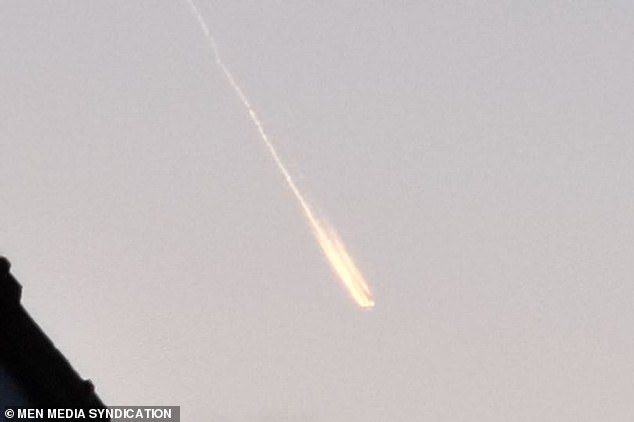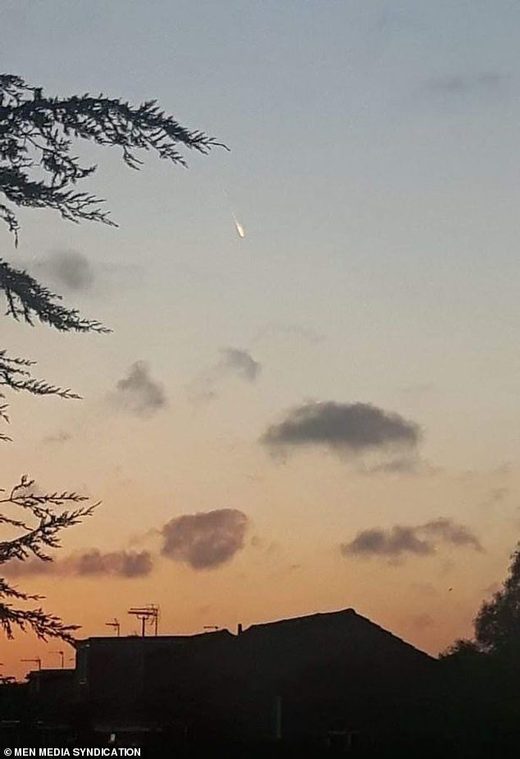
© Men Media Syndication
A bizarre burning fireball was spotted last night over Hull, with images capturing the moment the inferno burned up in the atmosphere as it plummeted towards Earth.
The Humberside 'bright orange' object was spotted by several people moving slowly over the city leaving a trail in its wake before disappearing.
Experts believe the unusual occurrence was a meteor, potentially linked to the annual Lyrid meteor shower due to commence this week.
Rebecca Holmes saw it from her garden in Bransholme, near Kingston upon Hull.
She said : 'I was sat in the garden, my husband was doing some gardening and
I looked up and it was so bright orange and it was just gliding really slowly like something was burning but it was definitely too slow to be a shooting star.
'It was weird it looked like either a plane or a rocket or something.'
In fact, it was most likely a meteor, potentially an early visitor from the annual Lyrid meteor shower, according to the experts.
Professor Brad Gibson, Director of the E.A. Milne Centre for Astrophysics at the University of Hull, told MailOnline:
'Without more context, the most likely explanation as to the object reported in the sky over Hull on Sunday evening is that it was a meteor.
Last week, a similar
event occurred in Cambridge. Dr Robert Massey, deputy executive director of the Royal Astronomical Society, said: 'The burning object moving through the sky on Wednesday night looks a lot like an aircraft contrail to me'
'Between April 16 and 25 every year, we see the annual Lyrid meteor shower.
'During this time period, it is possible you could see anything between 10 and 15 visible per hour in the sky.
'The Lyrid meteor shower is caused by debris which has been left by Comet Thatcher, which last visited the inner Solar System over 150 years ago in 1861.
'It is expected to return in the year 2276, and will burn up as it enters the Earth's atmosphere.
'As said previously, without more context as to this particular sighting, it is difficult to give a definitive explanation.
'However, based on the time of year, it is entirely possible that the object reported by residents in Hull formed part of the Lyrid meteor shower.'
However, consensus on the phenomena is divided, with Dr Graeme Marlton, a postdoctoral atmospheric scientist at the University of Reading, believing it may be a contrail.
He told MailOnline: 'It looks like a contrail from an aircraft. Given the short length, it looks like the conditions for contrail formation were weak.
'Following from that, the aircraft forming the contrail probably entered a region where contrails don't form, which may explain why it appeared to stop.
'The orange glow is due to the sun being low in the sky and shining on the underside.
'There was another report in Cambridgeshire a few days earlier that was similar.
'Contrails that get turned orange by the sun setting happen all the time. With everyone staying at home and enjoying the spring weather from their gardens, people may be looking to the sky a lot more.'


Reader Comments
(Proves the point about truths being ridiculed, then violently suppressed, and finally, accepted as obvious - by those selfsame assholes who violently suppressed the discussion.)